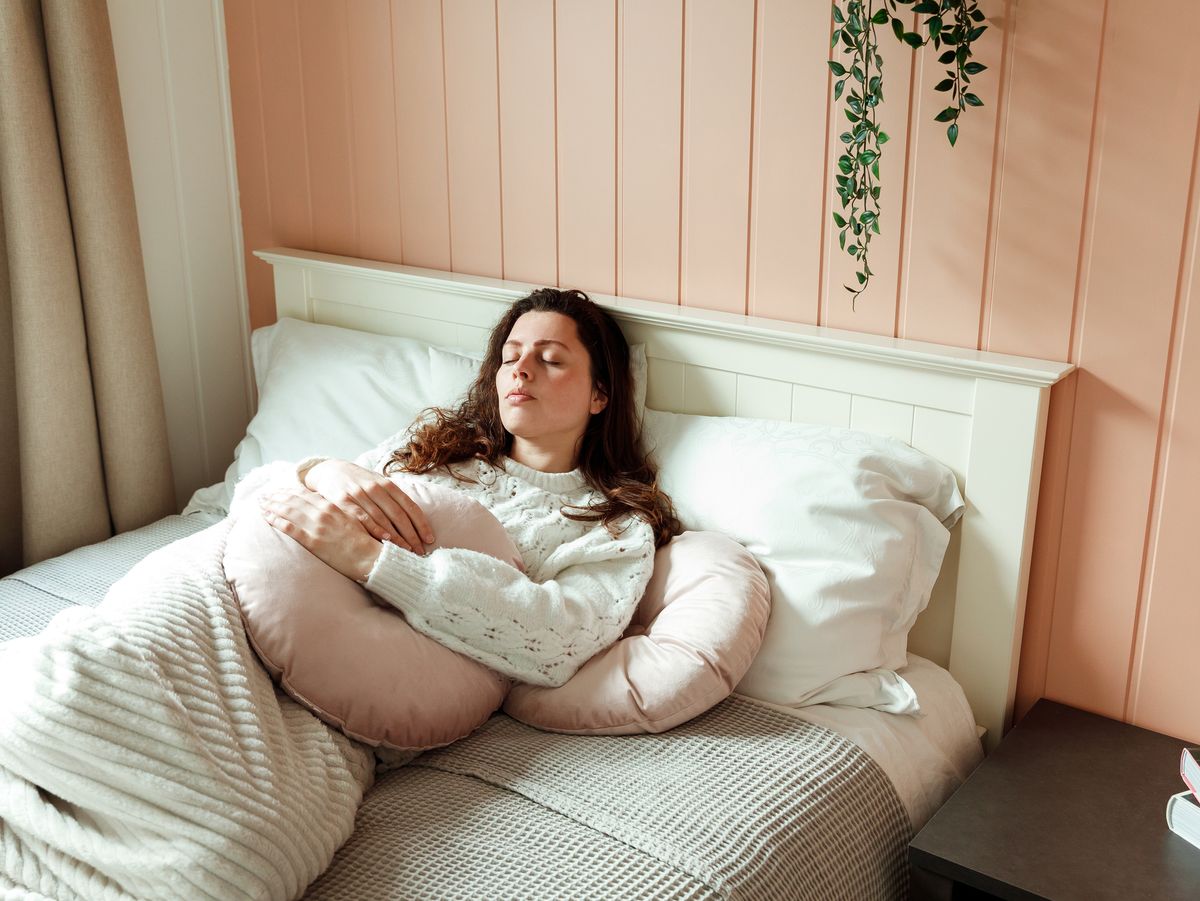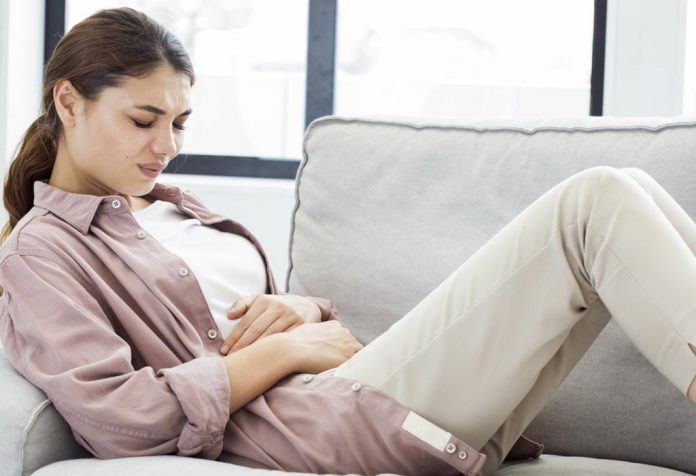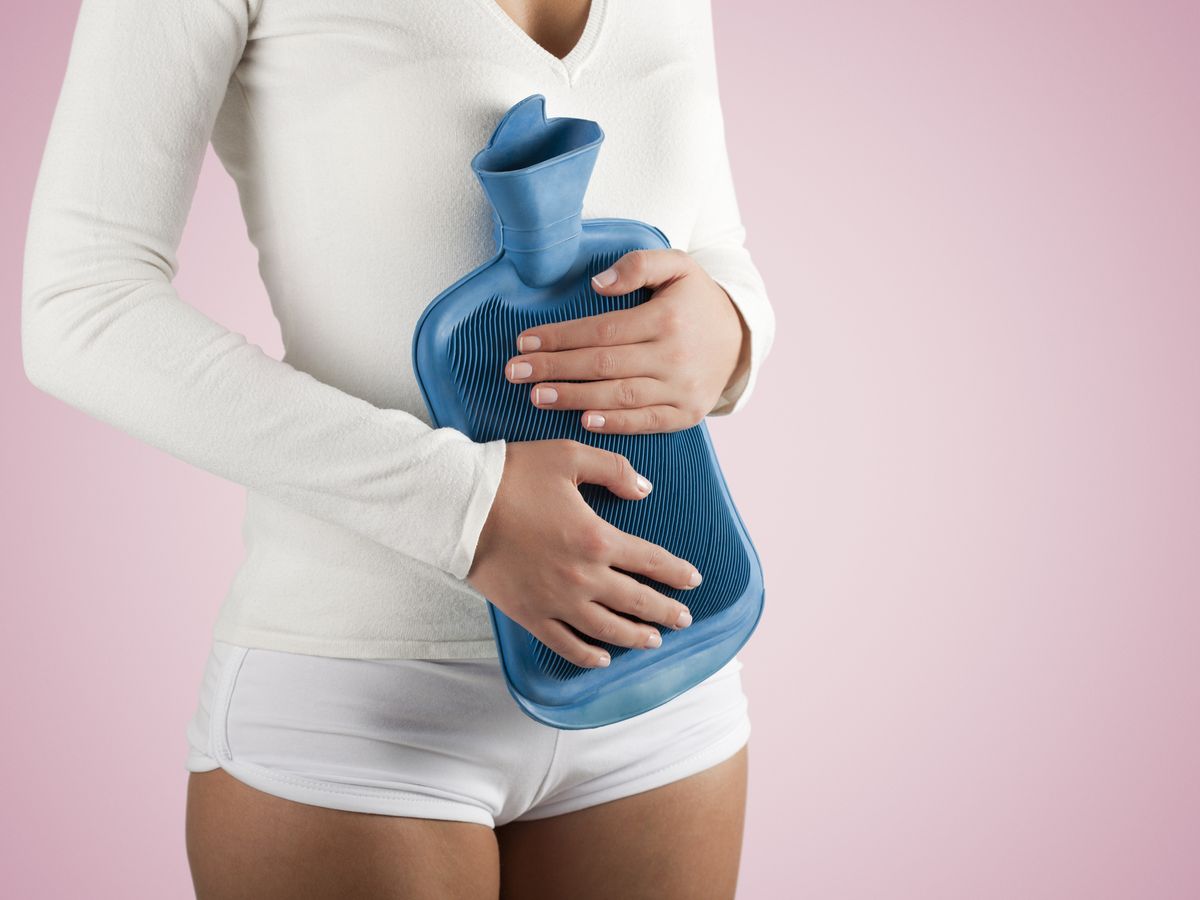Feeling those familiar twinges of discomfort, yet your period is nowhere in sight? Cramps without a period can be puzzling and concerning. The sensation of period-like pain, minus the expected bleeding, can leave you wondering what’s going on in your body. It’s essential to understand the potential causes behind this perplexing occurrence.

Today we will share the top 15 potential reasons for cramps without a period, including pregnancy, birth control side effects, ovulation, and conditions like endometriosis and fibroids.
Contents
- 1 15 Reasons Cramps But No Period
- 1.1 1. Ovulation Pain
- 1.2 2. Stress
- 1.3 3. Polycystic Ovary Syndrome (PCOS)
- 1.4 4. Endometriosis
- 1.5 5. Uterine Fibroids
- 1.6 6. Pelvic Inflammatory Disease (PID)
- 1.7 7. Contraceptive Use
- 1.8 8. Ectopic Pregnancy
- 1.9 9. Early Pregnancy
- 1.10 10. Ovarian Cysts
- 1.11 11. Premature Ovarian Failure
- 1.12 12. Thyroid Disorders
- 1.13 13. Adenomyosis
- 1.14 14. Weight Fluctuations
- 1.15 15. Exercise-Induced Amenorrhea
- 2 What Might Cause Period Pain But No Period?
- 3 Menstrual Cramps vs. Early Pregnancy Cramps
- 4 How To Treat Cramping?
- 5 Frequently Asked Questions
15 Reasons Cramps But No Period
If you’re experiencing cramps without a period, here are some possible reasons to consider:
1. Ovulation Pain
Mid-cycle cramping, known as mittelschmerz, occurs during ovulation when an ovary releases an egg. It’s a common reason for cramps without a period.
2. Stress
High-stress levels can disrupt your hormonal balance, affecting your menstrual cycle and causing cramps without the onset of a period.
3. Polycystic Ovary Syndrome (PCOS)
PCOS is a hormonal disorder causing enlarged ovaries with small cysts. It can lead to irregular periods or no periods at all, with accompanying cramps.
4. Endometriosis
This condition involves tissue similar to the uterine lining growing outside the uterus, causing painful cramps even without a period.
5. Uterine Fibroids
Noncancerous growths in the uterus can cause pelvic pain and cramping, sometimes without menstrual bleeding.
6. Pelvic Inflammatory Disease (PID)
An infection of the female reproductive organs, usually caused by sexually transmitted bacteria, can result in severe pelvic pain and cramps without menstruation.
7. Contraceptive Use
Starting or stopping birth control pills or having an IUD can cause cramping as the body adjusts to hormonal changes, potentially without a period.
8. Ectopic Pregnancy
A pregnancy outside of the uterus, typically in a fallopian tube, can cause cramping without a regular period, necessitating immediate medical attention.
9. Early Pregnancy
Early stages of pregnancy can cause cramping similar to period pains but without the bleeding, often before a missed period is noticed.
10. Ovarian Cysts
Cysts on the ovaries can cause pelvic pain and cramping independent of the menstrual cycle.
11. Premature Ovarian Failure
Also known as premature menopause, this condition can lead to irregular periods or no periods, with occasional cramping.
12. Thyroid Disorders
Both hypothyroidism and hyperthyroidism can affect menstrual cycles and cause cramps without bleeding due to hormonal imbalances.
13. Adenomyosis
This condition occurs when endometrial tissue grows into the muscular wall of the uterus, causing painful cramps, sometimes without menstrual bleeding.
14. Weight Fluctuations
Significant weight loss or gain can disrupt your cycle, leading to cramps without a period due to hormonal changes.
15. Exercise-Induced Amenorrhea
Excessive physical activity can lead to a loss of menstruation as the body conserves energy, causing cramps without bleeding.
What Might Cause Period Pain But No Period?
If you’re experiencing period-like cramps, but Aunt Flo hasn’t arrived, several factors could be at play. Here are some possible reasons to consider:

- Endometriosis: This condition can lead to intense cramping, beyond your typical period pain, even when you’re not menstruating.
- Ovarian Cysts: Cysts on your ovaries can trigger pain similar to menstrual cramps, even when you’re not on your period.
- Ectopic Pregnancy: In this serious condition, a fertilized egg implants outside the uterus, causing abdominal pain and cramping without menstruation.
- Miscarriage: Cramping can be a sign of early pregnancy loss, even before you would expect your period.
- Pelvic Inflammatory Disease (PID): PID can cause abdominal discomfort resembling period cramps, among other symptoms.
- Fibroids: These non-cancerous growths in the uterus can lead to pelvic pain and cramping outside of your menstrual cycle.
- Stress: Emotional or physical stress can manifest as abdominal cramps, similar to period pain.
- Adenomyosis: This condition, where the uterine lining grows into the muscle wall, can result in pain similar to menstrual cramps at various times of the month.
- Polycystic Ovary Syndrome (PCOS): PCOS may cause pelvic pain and cramping, not always tied to your period.
- Interstitial Cystitis: This chronic bladder condition can cause pelvic pain and cramping, mirroring period discomfort.
- Irritable Bowel Syndrome (IBS): Abdominal cramps and pain from IBS can sometimes mimic period cramps, even when you’re not menstruating.
Seeking guidance from a healthcare provider is crucial to pinpoint the exact cause of your cramps without a period.
Menstrual Cramps vs. Early Pregnancy Cramps
When comparing menstrual cramps to early pregnancy cramps, there are key differences to consider:

- Timing: Menstrual cramps typically occur just before or during your period, while early pregnancy cramps might happen around the time of your expected period.
- Intensity: Menstrual cramps are often more intense and may be accompanied by other period symptoms like bloating and mood swings. Early pregnancy cramps are usually milder and shorter in duration.
- Location: Menstrual cramps are commonly felt in the lower abdomen, while early pregnancy cramps might be felt lower in the pelvis or even on one side of the belly.
- Duration: Menstrual cramps can last for a few days, while early pregnancy cramps tend to be brief and infrequent.
How To Treat Cramping?
Here are several ways to treat cramps, ranging from over-the-counter medications to lifestyle changes:
1. Over-the-counter pain relievers:
- Nonsteroidal anti-inflammatory drugs (NSAIDs): These are the most common and effective medication for menstrual cramps. Examples include ibuprofen (Advil, Motrin) and naproxen (Aleve). Always follow the dosage instructions on the label and consult your doctor if you have any pre-existing medical conditions.
2. Heat therapy:
- Applying heat to your lower abdomen and lower back can help relax muscles and ease cramps. This can be done with a:
- Heating pad: Place it on your lower abdomen or lower back for 20-30 minutes at a time.
- Warm bath or shower: Soaking in warm water can help relax your muscles and ease discomfort.
- Hot water bottle: Wrap it in a towel and apply it to your lower abdomen or lower back.
3. Gentle exercise:
- Light exercise, such as walking, yoga, or swimming, can help improve circulation and alleviate cramps.
4. Massage:
- Gently massaging your lower abdomen and lower back in a circular motion may help relax your muscles and ease cramps.
5. Lifestyle changes:
- Diet: Eating a healthy diet rich in fruits, vegetables, and whole grains can help reduce inflammation and potentially alleviate cramps. Limiting salt and processed foods may also be beneficial.
- Hydration: Staying well-hydrated can help prevent cramps and improve overall well-being.
- Stress management: Practicing relaxation techniques like deep breathing or meditation can help manage stress, which can contribute to cramping.
- Sleep: Getting enough sleep (7-8 hours per night) can help regulate your hormones and potentially reduce discomfort.
Frequently Asked Questions
Why do I experience cramps without a period?
Cramps without a period could be due to conditions like endometriosis, ovarian cysts, pelvic inflammatory disease (PID), uterine fibroid or polyps, or polycystic ovary syndrome (PCOS).
Can I be pregnant with a negative test and no period?
If testing early or not using the first urine of the day, a negative test result can occur even if pregnant due to low hCG levels.
How long can a period be late?
Normal cycles are around every 28 days, but going over 35 days without a period is considered late. Some people can go months without a period, which may warrant concern.
What are the common symptoms of a miscarriage?
Symptoms of a miscarriage include vaginal bleeding, pelvic or back pain, passing of fluid or tissue, and a rapid heartbeat.
What is a ghost period?
Ghost periods, or phantom periods, mimic normal periods but lack actual flow and may be caused by factors like stress or endometriosis.
I am a medical student with experience and interest in Women’s health and well-being.